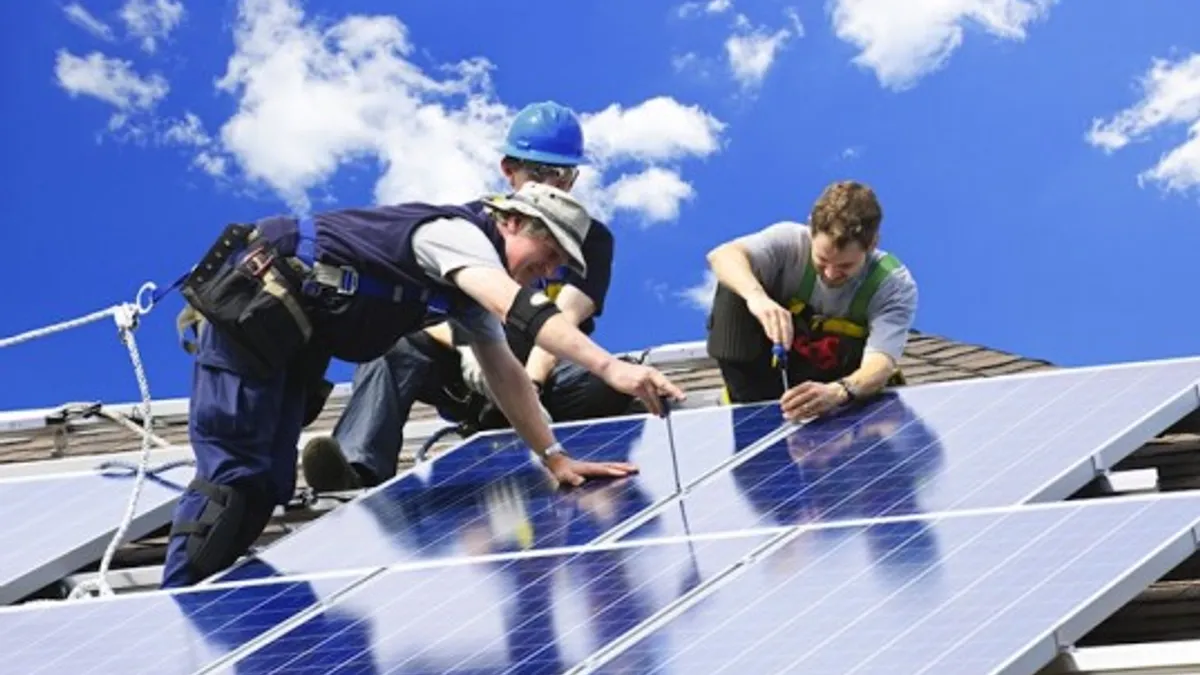Correction: This article has been updated to reflect that LBNL researchers found distributed solar likely raises the average national rate by no more than a $0.0003/kWh, not $0.03/kWh. The headline has also been updated to better reflect the results of the study.
Dive Brief:
- A new study from the Lawrence Berkeley National Laboratory has concluded what many utilities have been arguing for years: that high levels of distributed solar penetration can leave customers without panels paying more for their electricity.
- LBNL's study, Putting the Potential Rate Impacts of Distributed Solar Into Context, found net energy metering that uses strictly volumetric rates could lower or raise prices for other customers as much as 5% in either direction. Rate structures with fixed charges or demand charges lower that range, however.
- But on whole, the report concluded rooftop solar penetration levels remain so low, that the issue is of little significance outside a few states. And it said utility energy efficiency programs and federal appliance standards combined to reduce domestic retail power sales in 2015 by an amount "35-times larger than that of distributed solar."
Dive Insight:
A new study from the Lawrence Berkeley lab is a mixed bag, giving clean energy advocates plenty of support for expanded solar and efficiency. But a central premise confirms what some utilities have long been saying: That in areas with significant solar penetration, customers without panels can wind up subsidizing delivery costs.
In general, there is so little rooftop solar in the United States that the issue is insignificant in most regions. But for states or utilities with particularly high distributed solar penetration levels, "retail electricity price effects may be more significant, but depend critically on the value of solar and underlying rate structures," the report found.
"For states and utilities with exceptionally high distributed solar penetration levels, the effects on retail electricity prices could begin to approach the same scale as other important drivers," it reads.
That's been the driving rationale behind many net metering battles. Among the most high-profile, Arizona regulators voted last year to eliminate retail rate net metering and replace it with a reduced compensation mechanism over worries about cross-subsidization.
Only four utilities, all in Hawaii, have solar penetration rates near 10% of electricity sales. Three other states are projected to reach this mark by 2030, LBNL researchers found. Assuming a value of solar ranging from 50% to 150% of a utility's cost of service, "this level of distributed solar would yield between a 5% decrease and a 5% increase in retail electricity prices, under NEM with purely volumetric rates," the report found.
A utility with electricity prices otherwise equal to the national average would see price impacts of about $0.005/kWh, either higher or lower.
But the report also concluded that for the vast majority of states and utilities, "the effects of distributed solar on retail electricity prices will likely remain negligible for the foreseeable future." Given current solar penetration levels of about 0.4% of total U.S. retail electricity sales, distributed solar likely raises the average national rate by no more than a $0.0003/kWh.
In addition to the key solar findings, the LBNL research also highlights the value of efficiency. Projected growth in energy efficiency savings from federal and local policies through 2030 is almost 500% greater than projected growth in distributed solar generation.















